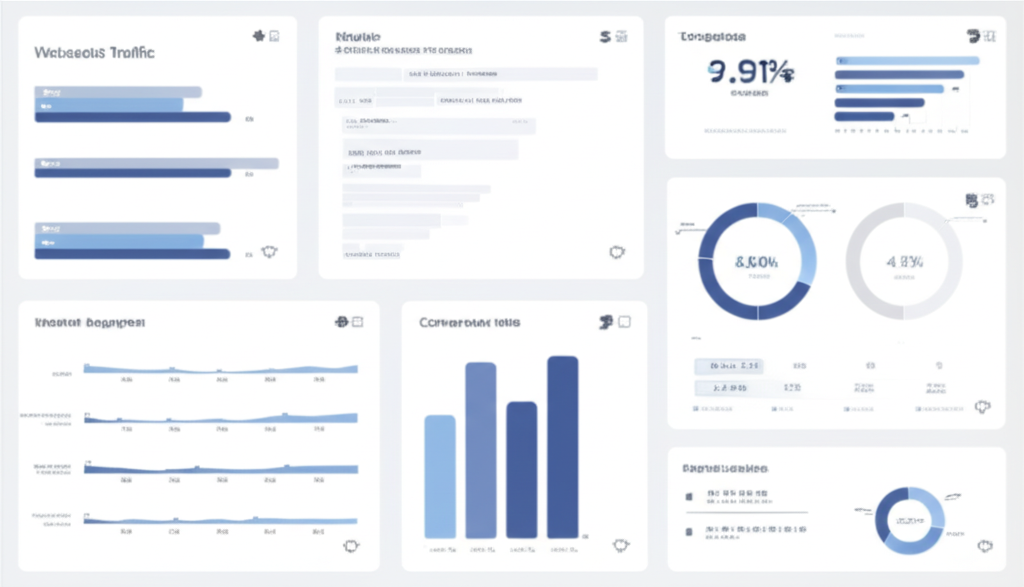Content Marketing ROI: Measuring What Matters in 2024

Learn the essential metrics and KPIs that successful companies track to maximize their content marketing investments and drive business growth.
Content marketing remains a cornerstone of digital strategy, often enhanced by AI-powered strategies, but in an increasingly competitive landscape, simply creating content isn't enough. Businesses must rigorously measure the return on investment (ROI) of their content efforts to justify budgets, refine strategies, and ultimately drive meaningful business growth. In 2024, understanding what to measure and how to measure it is more critical than ever.
Why Measuring Content Marketing ROI is Non-Negotiable
Demonstrating ROI provides tangible proof of content marketing's value to stakeholders. It transforms content from a perceived cost center into a demonstrable revenue driver. Effective measurement allows marketers to:
- Secure and Increase Budgets: Concrete data on returns makes it easier to advocate for necessary resources.
- Optimize Strategies: By identifying what works and what doesn't, teams can allocate resources more effectively and improve future content performance. This includes understanding which content formats, like those discussed in our short-form video strategies, yield the best results.
- Align with Business Goals: ROI metrics help ensure that content efforts are directly contributing to overarching company objectives, such as lead generation, sales, or brand awareness.
- Enhance Accountability: Clear metrics foster a culture of accountability and continuous improvement within marketing teams.
Key Metrics for Calculating Content Marketing ROI
Calculating content marketing ROI involves tracking both the costs of content production and distribution and the revenue or value generated. The basic formula is:
ROI = ((Return - Investment) / Investment) * 100%
However, the "Return" can be multifaceted. Here are essential metrics to consider:
1. Lead Generation & Quality
Content is often a primary driver for lead acquisition. Many modern approaches also leverage AI in generating and qualifying leads more efficiently. Effective lead nurturing, often through email marketing automation, is crucial once these leads are captured. Track:
- Number of Leads Generated: How many new contacts did a piece of content or a campaign produce (e.g., through form submissions on landing pages, gated content downloads)?
- Lead Quality Score: Not all leads are equal. Use lead scoring (based on demographics, behavior, engagement) to assess the quality of leads generated by content.
- Marketing Qualified Leads (MQLs) & Sales Qualified Leads (SQLs): How many leads progressed through the funnel as a result of content engagement?
- Cost Per Lead (CPL): Total content investment divided by the number of leads generated.
2. Sales Metrics
Ultimately, content should contribute to sales. Measure:
- Conversion Rate: Percentage of leads generated by content that convert into paying customers.
- Sales Revenue Attributable to Content: Using CRM data and marketing attribution models, trace sales back to specific content interactions.
- Customer Lifetime Value (CLV): Content can attract higher-value customers. Analyze if customers acquired through content marketing have a higher CLV.
- Sales Cycle Length: Does content help shorten the sales cycle?
3. Website Traffic & Engagement
While not direct revenue, these indicate audience interest and brand reach. Strong SEO and user experience optimization are key to maximizing this. Track:
- Organic Traffic: Growth in search engine traffic, often a direct result of valuable, SEO-optimized content.
- Page Views & Unique Visitors: How many people are consuming your content?
- Time on Page & Bounce Rate: Are users engaging deeply with the content, or leaving quickly?
- Backlinks Acquired: High-quality content attracts backlinks, boosting SEO authority.
4. Brand Awareness & Authority
Harder to quantify directly in monetary terms, but crucial for long-term success. This can be amplified through strategies like those discussed in our article on influencer marketing evolution. Measure:
- Social Shares & Mentions: How widely is your content being disseminated and discussed?
- Brand Search Volume: An increase in people searching for your brand can be an indirect result of strong content.
- Media Placements & PR Value: If your content gets picked up by other publications.
5. Cost Savings
Content can also save money:
- Reduced Customer Support Costs: Comprehensive FAQ pages, tutorials, and knowledge base articles can reduce the burden on support teams.
- Lower Cost of Acquisition: Organic leads from content marketing are often less expensive than leads from paid advertising.
Tools and Techniques for Effective ROI Measurement
Leverage tools like Google Analytics, CRM software (e.g., HubSpot, Salesforce), marketing automation platforms, and specialized content analytics tools. Implement UTM parameters consistently for campaign tracking. Utilize marketing attribution models (first-touch, last-touch, multi-touch) to understand how different content pieces contribute to conversions along the customer journey.
Challenges in Measuring Content ROI and How to Overcome Them
Measuring content ROI isn't without its challenges. Attribution can be complex, especially with long sales cycles. Some benefits, like brand building, are intangible and take time to manifest. Overcome these by:
- Setting Clear Goals and KPIs from the Outset: Define what success looks like before you start.
- Focusing on Long-Term Trends: Content marketing is a marathon, not a sprint. Don't get discouraged by short-term fluctuations.
- Using a Mix of Quantitative and Qualitative Data: Numbers tell part of the story, but customer feedback and sentiment are also valuable.
- Regularly Reviewing and Iterating: ROI measurement should inform ongoing strategy adjustments.
"In 2024, Amenti AI's approach to data-driven content marketing is paramount. If you can't measure it, you can't improve it, and you certainly can't prove its worth. Focus on the metrics that truly matter to your business goals."
By diligently tracking the right metrics and understanding the nuances of ROI calculation, marketers can transform their content strategies from hopeful endeavors into predictable engines of growth. The insights gained will not only validate the investment in content but also pave the way for more impactful and efficient marketing in the future. For instance, understanding ROI can help in deciding how much to invest in personalization at scale for your content.